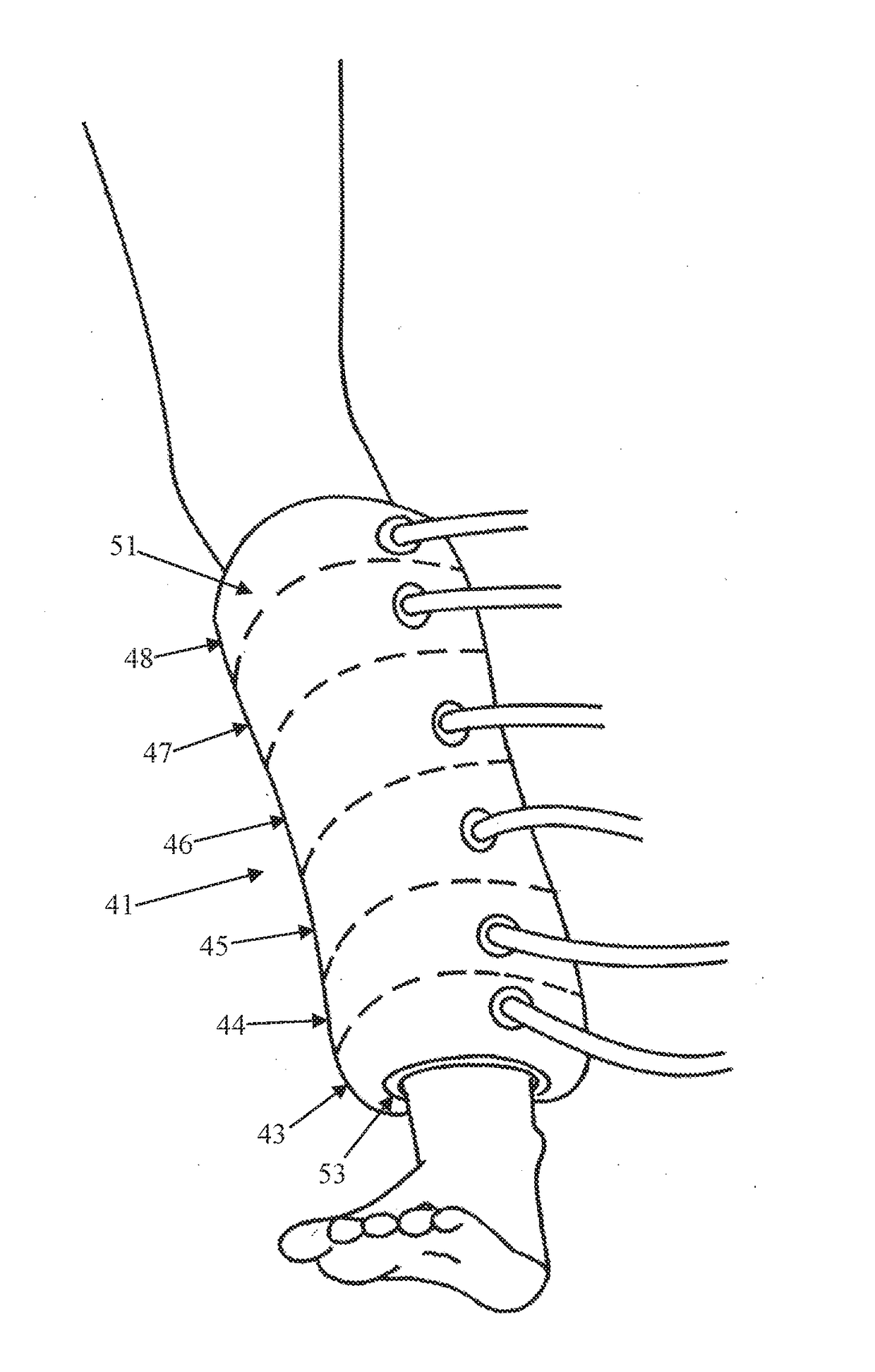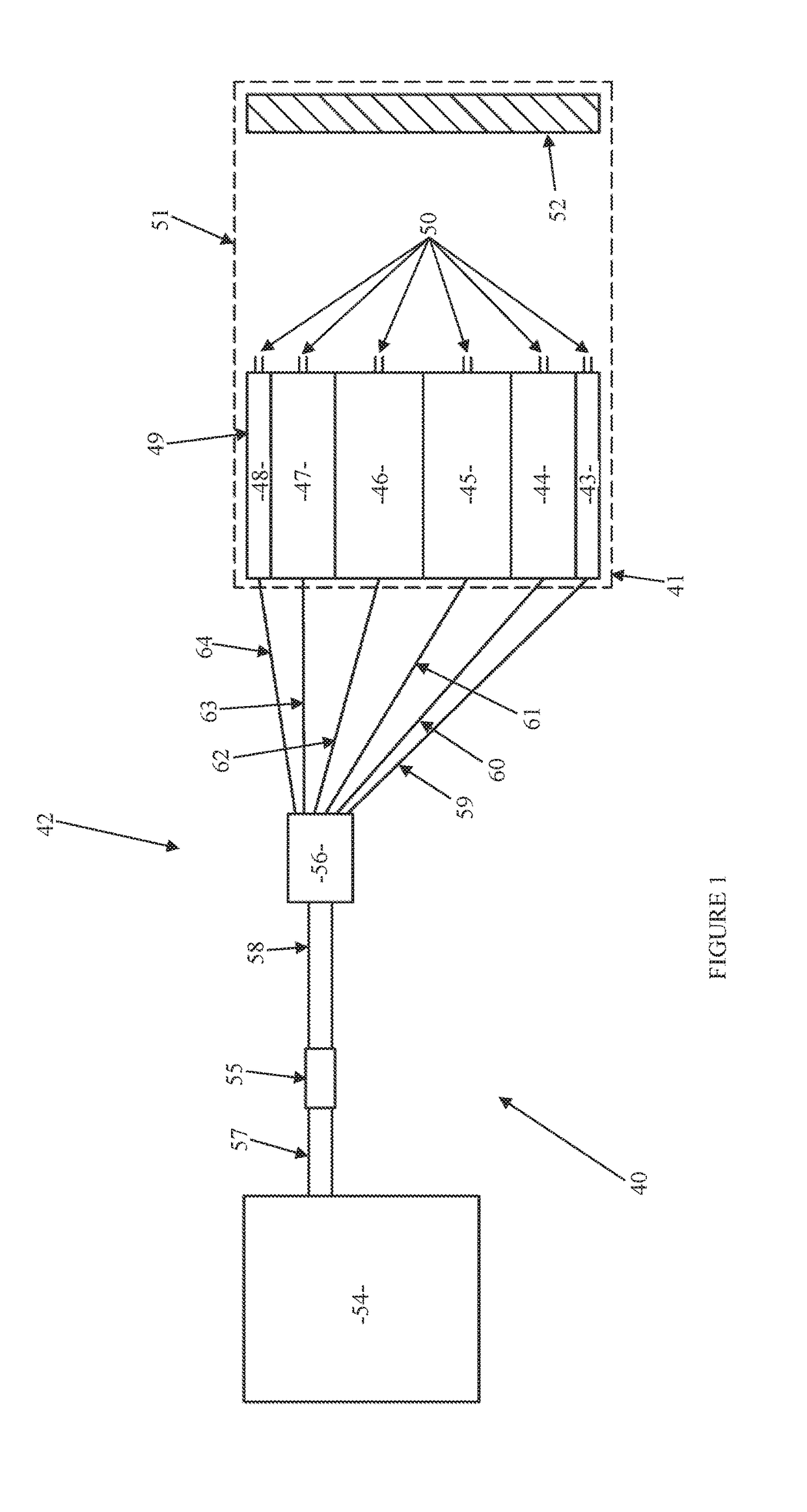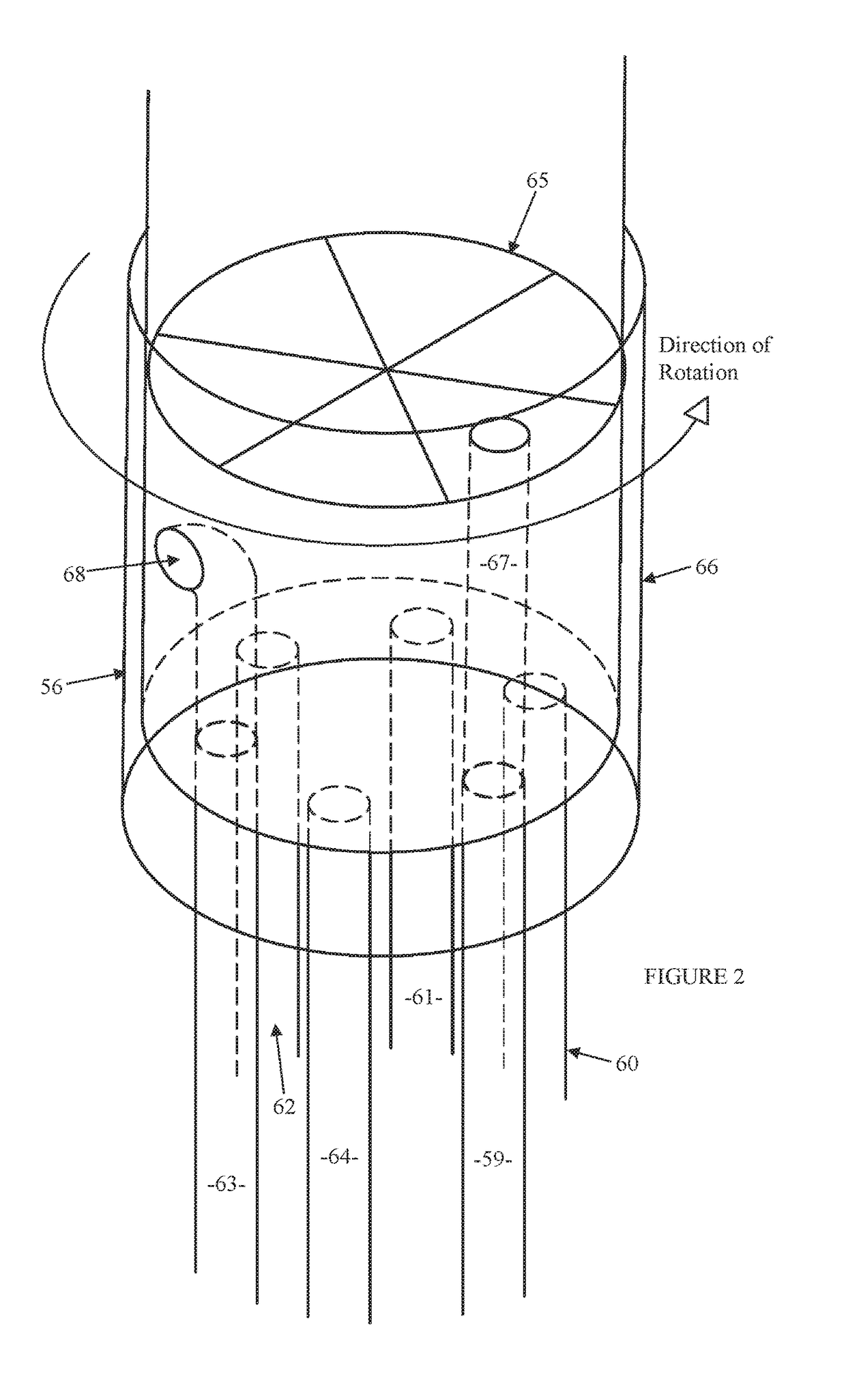Therapeutic Device
a technology of venous blood flow and therapeutic devices, applied in the field of therapeutic devices, can solve the problems of inability to function directional valves, damage, and distension of veins, and achieve the effect of enhancing venous blood flow through the limb
- Summary
- Abstract
- Description
- Claims
- Application Information
AI Technical Summary
Benefits of technology
Problems solved by technology
Method used
Image
Examples
Embodiment Construction
[0104]In the figures, like reference numerals refer to like features.
[0105]FIG. 1 shows an apparatus 40 for enhancing venous blood flow through a lower leg of a person. The apparatus 40 includes an inflatable compression sleeve 41 (best seen in FIG. 4) extendable around the person's leg and an air delivery system 42 for delivering air to the compression sleeve 41. The compression sleeve 41 is similar to a sphygmomanometer.
[0106]The compression sleeve 41 has six inflatable chambers 43-48 situated next to one another along the compression sleeve 41. The chambers 43-48 are elongate and extend around the limb, as seen in FIG. 4. The chambers 43-48 are provided by a sealed rubber bladder 49. Chambers 43 and 48 are narrower than chambers 44-47 and hold less air. (Chambers 43 and 48, however, need not be narrower than chambers 44-47). Each chamber 43-48 has a pressure relief valve 50 that opens when chamber 43-48 pressure exceeds about 35 mm Hg. The pressure relief valves 50 prevent the ch...
PUM
 Login to View More
Login to View More Abstract
Description
Claims
Application Information
 Login to View More
Login to View More - R&D
- Intellectual Property
- Life Sciences
- Materials
- Tech Scout
- Unparalleled Data Quality
- Higher Quality Content
- 60% Fewer Hallucinations
Browse by: Latest US Patents, China's latest patents, Technical Efficacy Thesaurus, Application Domain, Technology Topic, Popular Technical Reports.
© 2025 PatSnap. All rights reserved.Legal|Privacy policy|Modern Slavery Act Transparency Statement|Sitemap|About US| Contact US: help@patsnap.com



